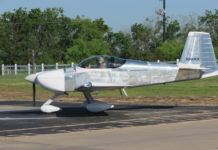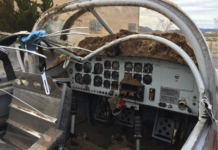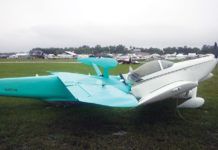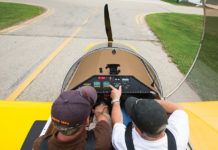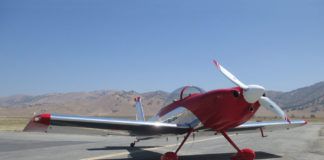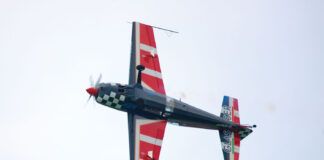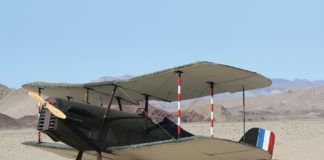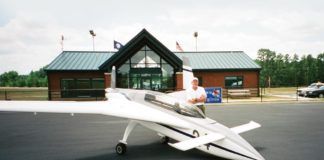Let’s talk insurance, or what is better known as risk management. Should you buy aviation insurance? Unlike cars, most states don’t require aviation insurance. A few states require liability coverage, and finance companies require insurance if you borrow their money. Airports and municipalities might request proof of insurance if you want to base your aircraft at their airport. But it is not required nationally.
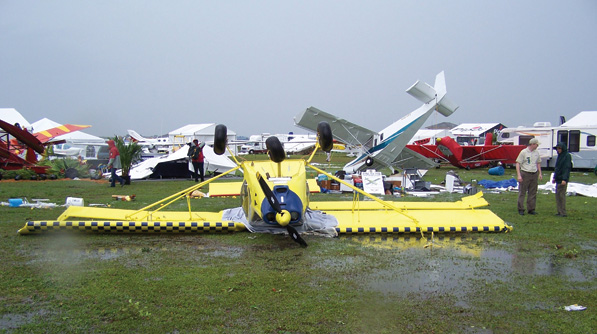
As visitors to the 2011 Sun ‘n Fun fly-in found out, violent weather can strike at any time. Typically “natural disasters” are covered by insurance, though a few companies offer a dollar amount to relocate your aircraft out of the path of a hurricane, and if you don’t, raise your deductible.
One can think of insurance as a “necessary evil” or as a “savings account.” But probably the best way to think of it is as a means of managing financial risk. There are professional risk managers who can evaluate your risk exposure and make recommendations for your particular situation. (It never hurts to learn a few basics, so don’t pass up professional help from a risk manager.) Managing risk can be summarized by four different actions: avoiding risk, reducing risk, containing risk and transferring risk.
We are talking about insurance, so let’s jump directly to transferring risk. (If you can’t afford the risk on your own, you transfer the risk to someone else.) You pay a little money each year to a company that promises (in writing) to pay for damages you might incur over the course of that year. While it seems like you’re putting your money into someone else’s pocket, remember that if you have an accident they, not you, are supposed to pay for the claim.
Sound like insurance? There is more to the process, of course, but the basic concept is: Aircraft owners pay their premiums to the insurance company, and if they have an accident, the insurance company pays for the repairs or claims. The insurance company is betting the owners will pay them the money and then not have any accidents. (This is probably one of the few times that the only way you “win” is for something “bad” to happen!) Thus, the aircraft owners have transferred the risk of any accidents to the insurance company—for a price.
Of course, the insurance companies will require that you meet certain criteria before letting you transfer the risk to them. They have a lot of money at stake if you make a error, and they don’t like to lose it. So don’t expect them to let anyone fly anything without training and premiums. Additionally, they have experience with different aircraft, and they use the risk management steps when evaluating you. If their past experience with a particular aircraft is bad, they may make the decision to avoid the risk altogether (decline to quote), reduce the risk by requiring training, instrument ratings or hours, or even transfer the risk by getting another company to take on part of it. Everyone is using a version of the same process, and we all want the same results: lower costs and lower risk.
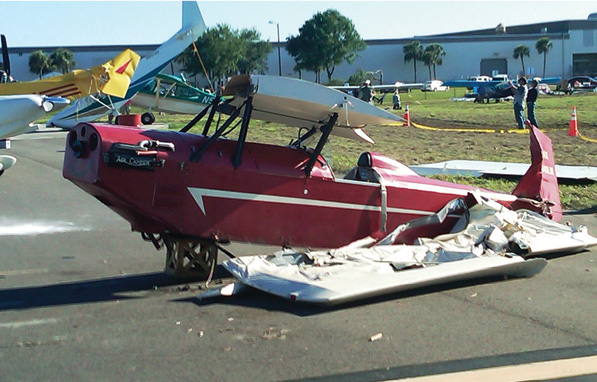
More casualties from Lakeland, Florida, in the aftermath of a storm that surprised visitors and vendors alike during Sun ‘n Fun.
What Coverage Is There?
Aviation insurance is pretty much a homogenous product. You have the basic third party liability coverage, which pays for property damage and bodily injury to third parties when the owner of the aircraft is found liable. The standard limit of liability for most companies is $1 million per occurrence for the bodily injury and property damage claims, with a passenger sub-limit of $100,000. That’s the basic coverage. Higher limits are difficult to come by in custom-built aircraft. An option may be $1 million without a sub-limit per passenger or a higher sub-limit per passenger, say, $250,000. Whatever the limits are, the insurance company will not go over the total occurrence amount. For example, let’s take a $1 million occurrence limit with a $500,000 per passenger sub-limit in a four-seat aircraft. In theory, if all four seats filed a claim ($500,000 times four), it would surpass the total limit of $1 million. So simply put, the total of all the passenger coverage cannot be more than the “per occurrence” limit.
Medical coverage is a limited “no fault” coverage for direct medical expenses. When an aircraft crashes and the ambulance is called, the ambulance and emergency room bills are paid from this medical. Most insurance companies will include a small amount of medical ($1000, $5000 or $10,000). Is that enough to be airlifted to a trauma center? If you don’t have much medical coverage in your policy, crash close to a main road with easy access to a hospital. None of these coverages are designed to replace your regular health or life insurance. They are considered extra, excess or secondary coverage.
Then there is airplane coverage. Hull coverage is like comprehensive and collision on your car insurance. With aviation insurance you can have coverage while on the ground, while in flight, or both. Or you don’t have to buy it at all.
Most claims are made against the hull of the aircraft and include mishaps such as fire, theft, gear-up landings, loss of control, and so on. The hull is a limited loss to the insurance company based on the agreed value; you’ll only get the agreed-upon amount for the loss (minus your deductible).
But if you don’t want to buy hull coverage, it doesn’t mean the underwriting requirements will change. If you are a low-time pilot, don’t expect the underwriters to provide you with liability-only coverage for your new turbine-powered Lawn Dart 4000. If all you have is liability, the insurance company is still involved. Why wouldn’t they want you to meet the same requirements for the liability-only loss?
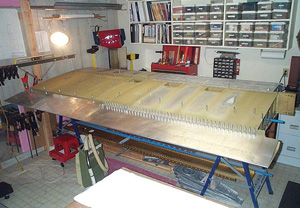
This picture was provided by Jack T. Textor of his Van’s being built in his basement. Document your labor and materials so that you’ll have proof of what you’ve invested before you even fly.
Builder’s Risk
Should you buy coverage if your aircraft is still under construction in your garage? Maybe, maybe not. It depends on how much work you have done and how much money you have spent. I usually recommend that customers wait until there is a value, in both time and money, that they do not feel comfortable losing. During the building process, you would be buying a version of ground “not in motion” coverage, sometimes called “builder’s risk.” This coverage will pay for the parts and sometimes some of the labor for what you have built so far. If you buy a quickbuild kit, or have the engine or avionics, consider a builder’s policy. If it includes reimbursement for labor, it’s based on factory estimated build times and hourly wages, not “shop rates.” Make sure you take pictures and keep receipts as you go along to establish value in the event of a loss. Without records there’s no proof of how much a project is really worth.
Will your homeowner’s policy cover the parts? It depends. If the project (or parts) look like an aircraft or is aviation specific, probably not. If all you have is a pile of metal or wood, then this might be covered.
Fly-Off Coverage
Not all companies offer fly-off coverage from the very first flight, and the ones that do often have different coverage during the fly-off flight time. Liability might be limited to $500,000 with no passenger coverage (I don’t think many homebuilt aircraft require two-pilot operations during the fly-off anyway). If someone other than the owner flies the aircraft (first flight, test flight, etc.), that person would still be considered a passenger and would not have any coverage.
Sometimes the insurance company will have a higher hull deductible during the restriction period, such as a 10% deductible while the aircraft is “in motion.” That means an aircraft with a hull value of $100,000 will have a $10,000 deductible during the fly-off time. Remember, the deductible is the share the owner will pay. And “in motion” hull coverage is typically anytime the aircraft is under its own power (taxi, takeoff, flying and landing).
So where do the real problems come in? I think the homebuilt aircraft insurance problems can be broken down into five different areas: number of aircraft on the market, construction materials used, landing-gear configuration, type of powerplant and overall performance. Make it six areas if you include the pilot flying the aircraft.
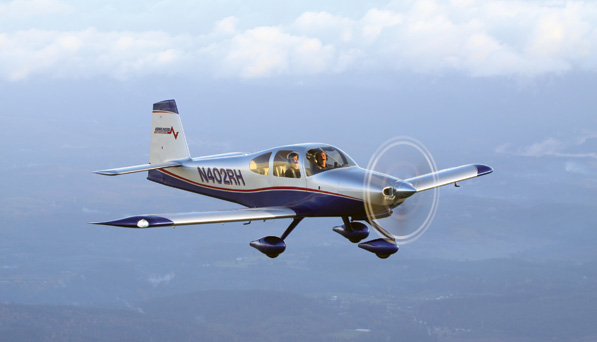
Insurance companies like a well-proven design and a sizable fleet of aircraft, as is the case with the Van’s RV-10.
Number of Aircraft
This doesn’t refer to the number of aircraft the pilot owns or has flown; this is the number of aircraft that are like it that are flying. If there are very few of the same design on the market, the underwriters won’t have any experience rating the aircraft, settling claims or even having claims for that matter. Because of the low production numbers, training can be difficult to get. That puts the underwriter in the position of letting a pilot fly an aircraft that he can’t get training for, a real one-of-a-kind experience, and underwriters don’t like one-of-a-kind experiences. You can bet that fewer aircraft and lower experience will calculate into higher premiums.
Construction Materials Used
Another issue is repairs. The more conventional the construction, the better the rates will be. Rates are higher on composites because of a lack of experience for underwriters, claims adjusters and mechanics. Minor accidents may result in a total loss because the cost of repair is ridiculously high. Qualified mechanics might be too far away to economically transport the damaged aircraft for repairs. Additionally, some of the composite aircraft are built as a one-piece assembly, making transportation difficult. That won’t be a problem if the airplane is already at the airport, but if it’s not, sometimes the wings will have to be cut from the fuselage just to get the aircraft to the shop.
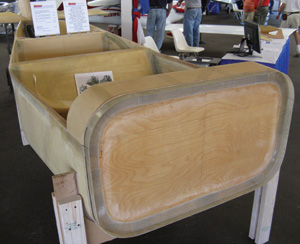
If you buy a quickbuild kit, or already have the engine or avionics, consider a builder’s policy for the construction phase of the project.
Landing Gear Configuration
A fixed, trigear airplane is the best possible scenario for most insurance companies. Dual requirements are lower, and first-flight coverage will usually require less training. If you are a low-time, taildragger (conventional) gear pilot, the insurance company will require a minimum amount of dual in the same make and model before you can fly your airplane. That can be pretty tough if you have the only aircraft of its kind in a 10-state area. Retractable-gear aircraft offer the same problem.
Most companies will have a training requirement with the transition to a different type of landing gear. Five to 20 hours of dual instruction is common. Recently underwriters have been stipulating a certain number of “takeoff and landings to a complete stop” in the requirements, because many new pilots were using long cross-country flights as a way to build hours. Cross-country flying will not provide pilots with the training necessary for the transition based on the landing gear configurations. And don’t forget, premiums are usually higher for taildragger or retractable-gear aircraft when compared to a fixed-trigear aircraft.
Power
Custom-built aircraft engines can be auto conversion, aviation units, ground units, and even turbines and diesels. It is not usually the engine that fails, but the accessories or the reduction unit. Because of the failures, the majority of companies just quit insuring aircraft with conversions. Of course, the same thing happened when the first Rotax engines became popular. Who wanted to insure a snowmobile engine? A popular conversion is important. If there are no other conversions like it, it becomes a one-of-a-kind aircraft. Remember, underwriters don’t like those. If there are many similar conversions on the market, the chances of getting coverage is better. Insufficient empirical data for most underwriters, even if you have enough money, probably won’t get you a quote.
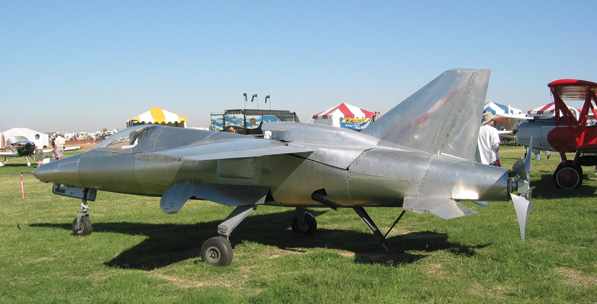
Insurance companies won’t see a low-time pilot paired with a “mach buster” aircraft as a good match between man and machine.
High Performance
The faster and more complex the aircraft, the harder it is to insure. One example is the Lancair IV-P. This is a great, solid, pressurized four-place airplane. Most underwriters won’t touch it because it is considered a Malibu-class aircraft. Most pilots building the IV-P are not Malibu pilots. I have never found an accident that was caused by the IV-P failing, though pilots have failed. The same goes for the Harmon/F1 Rocket. Speed and performance have put this aircraft in a category that requires high tailwheel time and deep pockets. Right now, there are only a couple of companies that will offer a quote for these airplanes.
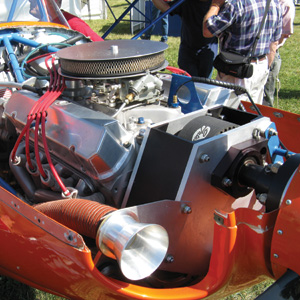
Auto-engine conversions may prove more challenging to insure.
Type of Pilot
Of course, the final variable in any insurance situation is the pilot. A student pilot will have trouble getting coverage in a homebuilt aircraft, unless it’s a fairly common type and is complete with no restrictions to fly off. The Van’s series of airplanes is well-liked by underwriters because they offer predictable handling and conventional construction. A student pilot could use many of the Van’s aircraft—if the aircraft are set up with dual controls and the restrictions are flown off.
At the other end of the spectrum, airline pilots who have spent most of their lives flying big aircraft (as opposed to “little” GA aircraft) might need just as much training as a low-time pilot. Yes, they know the systems and they have the experience, but small aircraft do react differently.
If you are a multi-engine pilot, don’t expect much sympathy from the underwriting community when you roll out your new “four-engine Kitfox.” Insurance probably won’t happen. And if you are thinking about that high-powered kit jet aircraft and you are the “average” piston engine pilot, I don’t foresee much chance of you getting insurance either. I once insured a medium-time piston twin pilot in a turbine-powered twin; underwriting required 100 hours of dual, and we got only one quote. He had no options (and the insurance company had no competition).
The bottom line is the key for the underwriters. If the aircraft is expensive and the pilot is low time, statistics show that there will be a claim, and it will be expensive. Of course, history is not indicative of future results, but it sure paints a good picture. And history says that fast, expensive, complicated aircraft (homebuilt or factory certified), mixed with low-time pilots and money, result in losses to the insurance company. And insurance company losses lead to increased underwriting scrutiny, increased training requirements and increased premiums. I’d rather avoid all that, so I’m thinking slow, docile and well-known might be my best choice.







